There were times when all women were engaged in needlework. Most girls collected a dowry, which necessarily included a tablecloth embroidered by themselves. Today, this tradition has faded into the background, but embroidery on scarves, napkins, tablecloths and towels has remained. In addition, they are gaining more and more popularity, as they are an excellent decoration for any interior. Their special value lies in the fact that they are made by hand. This article tells what embroidery is and tablecloth and napkin patterns, how to cross-stitch a tablecloth.
Selecting a pattern
A tablecloth will be truly beautiful only when the pattern and design are chosen correctly. This can be a ready-made pattern or an embroidery ornament or any other design that will be reproduced on the fabric. For example, it can be a flower or an animal, a bird, fruits and vegetables. Embroidering large and complex patterns will take longer and requires certain skills, but for the same fruits, much experience is not needed.
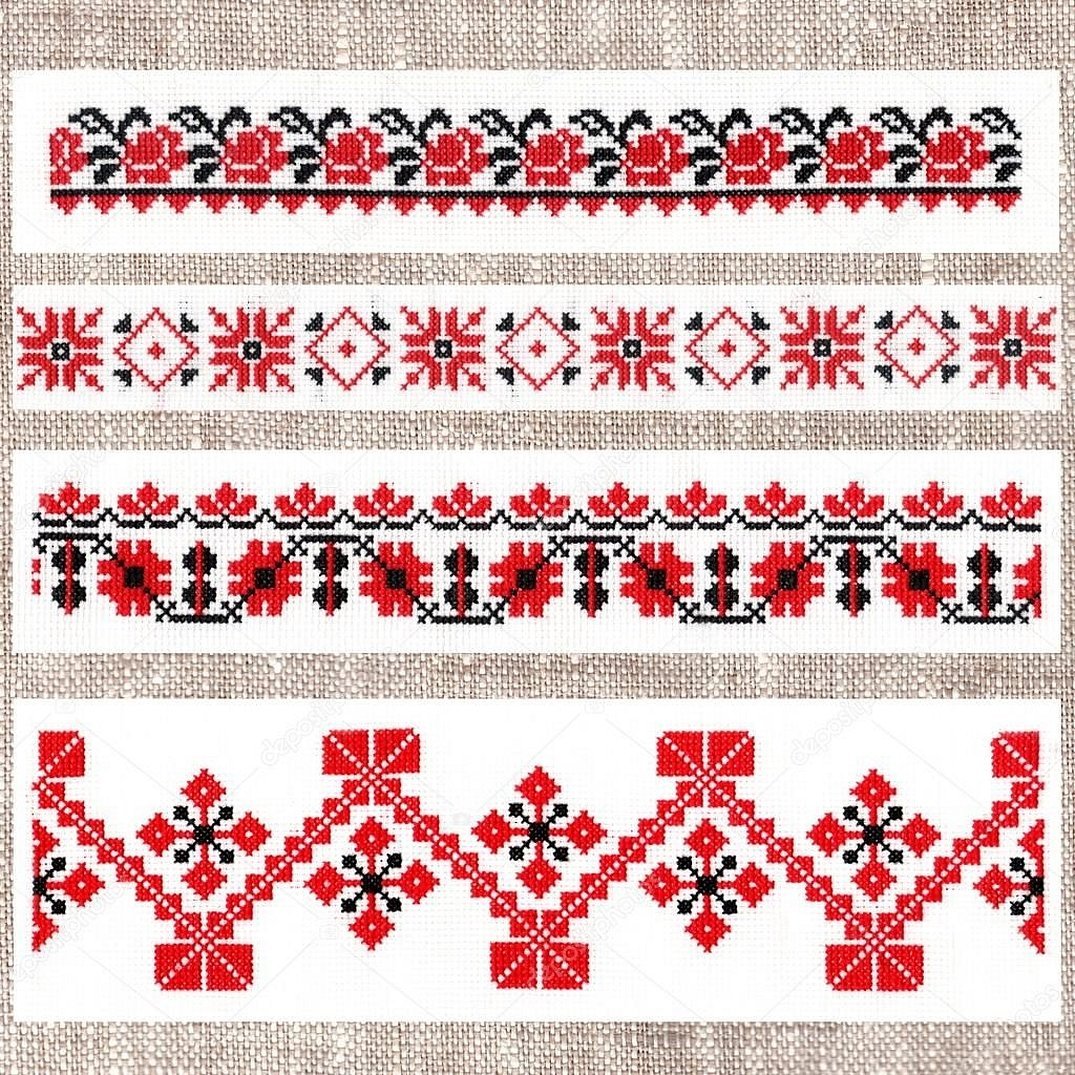
Some difficulties may also arise when you have to place drawings or patterns at the same distance from each other. That is why beginner needlewomen are advised to choose a simple drawing to start with and do it with several colored floss threads.
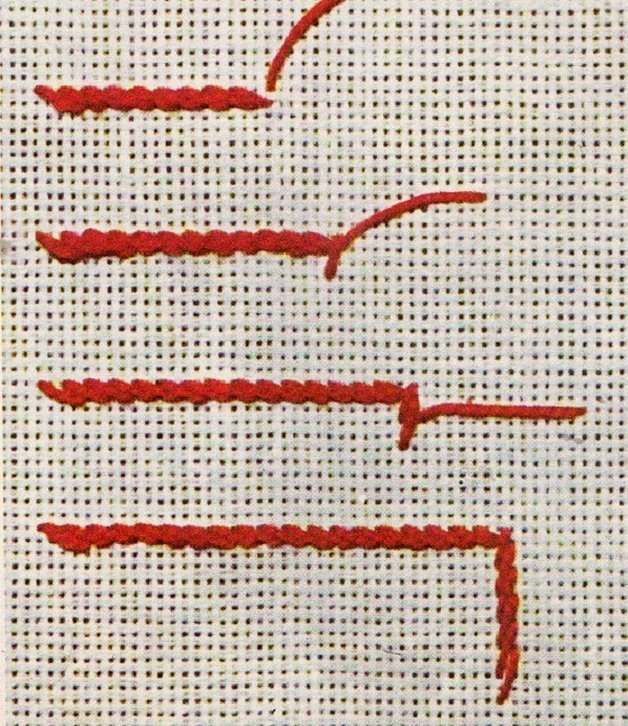
When choosing patterns, you always need to calculate exactly so that it fits neatly on the canvas several times (or dozens of times) and is not cut off by its end. The most popular pattern options for many decades have been flowers: roses, tulips, violets. They fit organically into the overall interior and look great.
You can use the patterns that will be presented in this article or buy (find) others on the Internet. You can also buy a set consisting of a clean tablecloth, floss threads and caught patterns for embroidery and explanations. They are wonderful because they already have the number of threads of certain colors calculated. Among the frequently used patterns, the following stand out:
- Floral and plant motifs. As already mentioned, flowers and plant motifs are the most popular when embroidered on all kinds of canvases. They look very good and are suitable for almost any interior. To embroider them, you need to keep the distance between the floral patterns precisely;
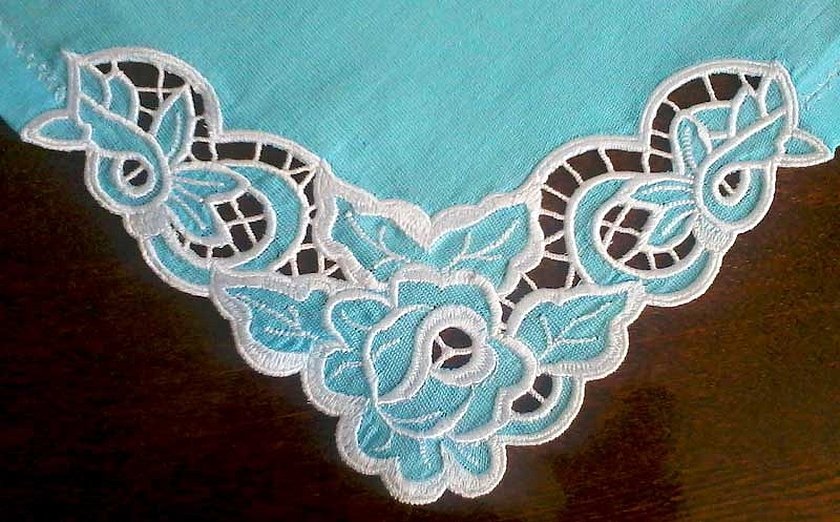
- Tablecloth with birds. Animals and birds have always been valued as tablecloth designs. They make the interior look lively and interesting;
- Tablecloth with macaroons. Macaroons are delicate and airy pastries that are gaining popularity all over the world. Canvases with embroidered macaroons in delicate tones are suitable for modern design and children's rooms;
- Autumn tablecloth. Autumn motifs can please not only in autumn, but also remind of someone's favorite time of year - summer or spring. Such designs are distinguished by golden and warm tones;
- Apples. The most popular fruit depicted in embroidery is the apple. They come in different sizes and colors and emphasize the fullness of the table;
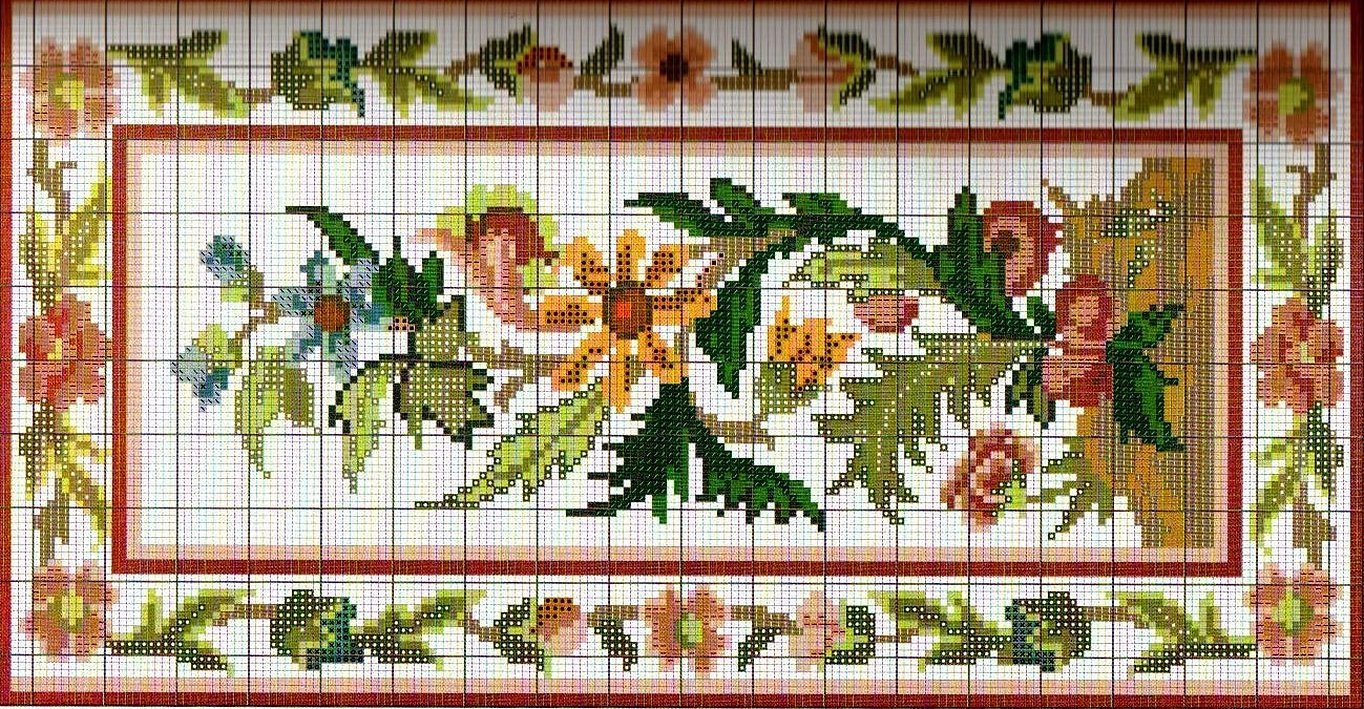
- Currant. Strawberries, wild strawberries or raspberries are often used as berries. A little less often, plums or cherries become a pattern. Embroidering red or black currants on a tablecloth is a bold and original decision;
- Chickens. Another bold design is chickens. They bring coziness to the house and to all tablecloths, towels or bedspreads.
Motif for embroidery of a napkin
There are as many motifs for napkins as for tablecloths. This means that all the colors and patterns described above can be easily embroidered on napkins in a reduced scale. The only nuance is in the detailing: what looked beautiful in a large scale will look unsightly in a small scale. Specific patterns and motifs were invented especially for napkins:
- New Year's motive;
- Ornament similar to shirt embroidery;
- Easter towels;
- Easter and regular flowers;
- Still lifes;
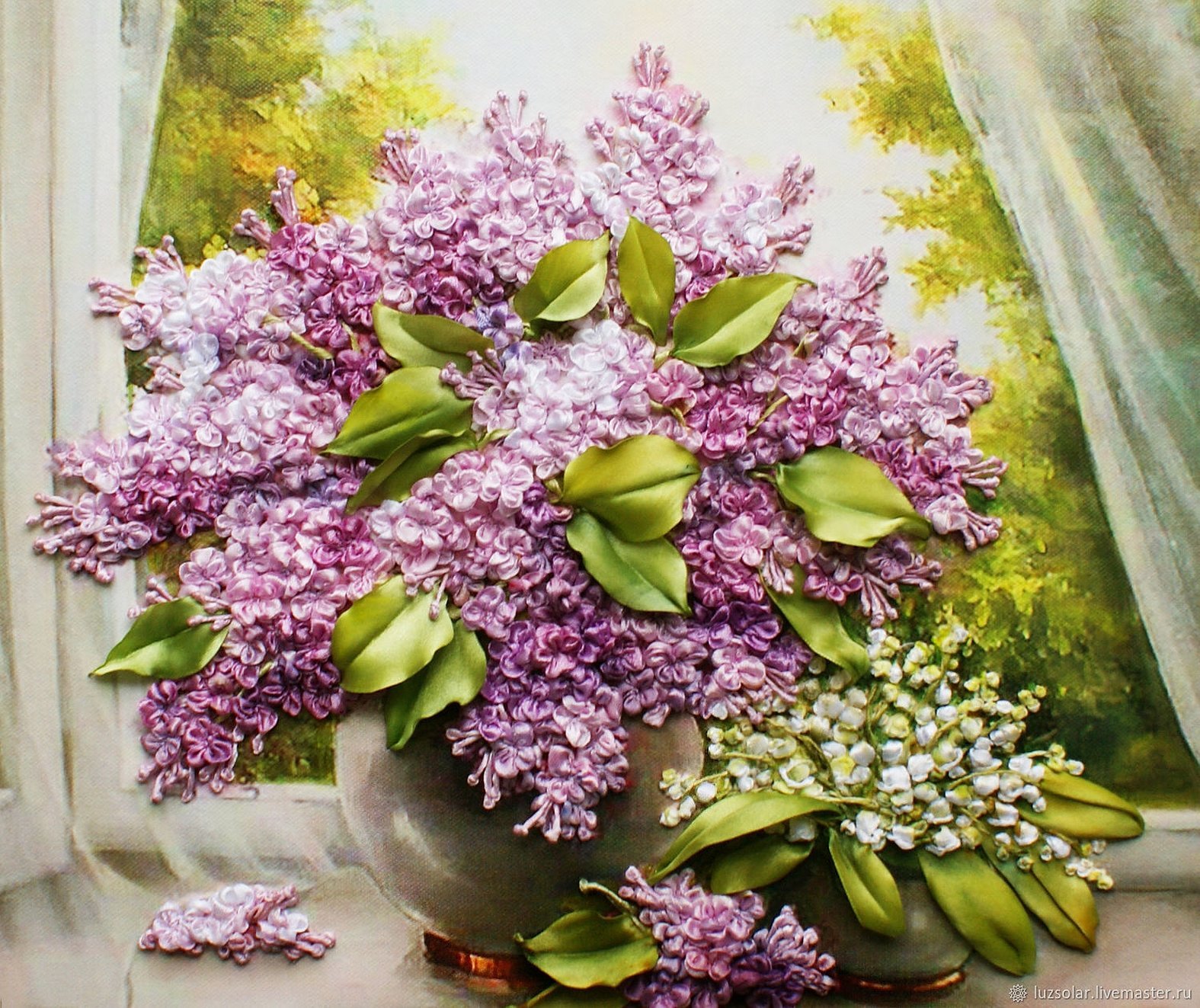
Important! In general, you can embroider almost anything on napkins, as well as on tablecloths. The final result depends on the author's desire and creative abilities, as well as on his skill.
Hardanger and Florentine patterns for embroidery of napkins or linens
One of the embroidery options is Hardanger. This is a type of openwork embroidery, which is called so because it has Scandinavian roots (there is a bay called Hardanger in Norway). The embroidery technique has existed for quite a long time, because according to some sources it was known in Persia and Egypt. The technique itself involves the presence of strict symmetrical patterns made of floss.
Florentine embroidery or bargello is another ancient type of needlework. It is used to create colorful three-dimensional patterns and ornaments on clean fabric. The figures embroidered in this way have both sharp and rounded shapes. This style of embroidery is often confused with satin stitch. The difference is that the Florentine version has a rather limited direction and stitch sizes.
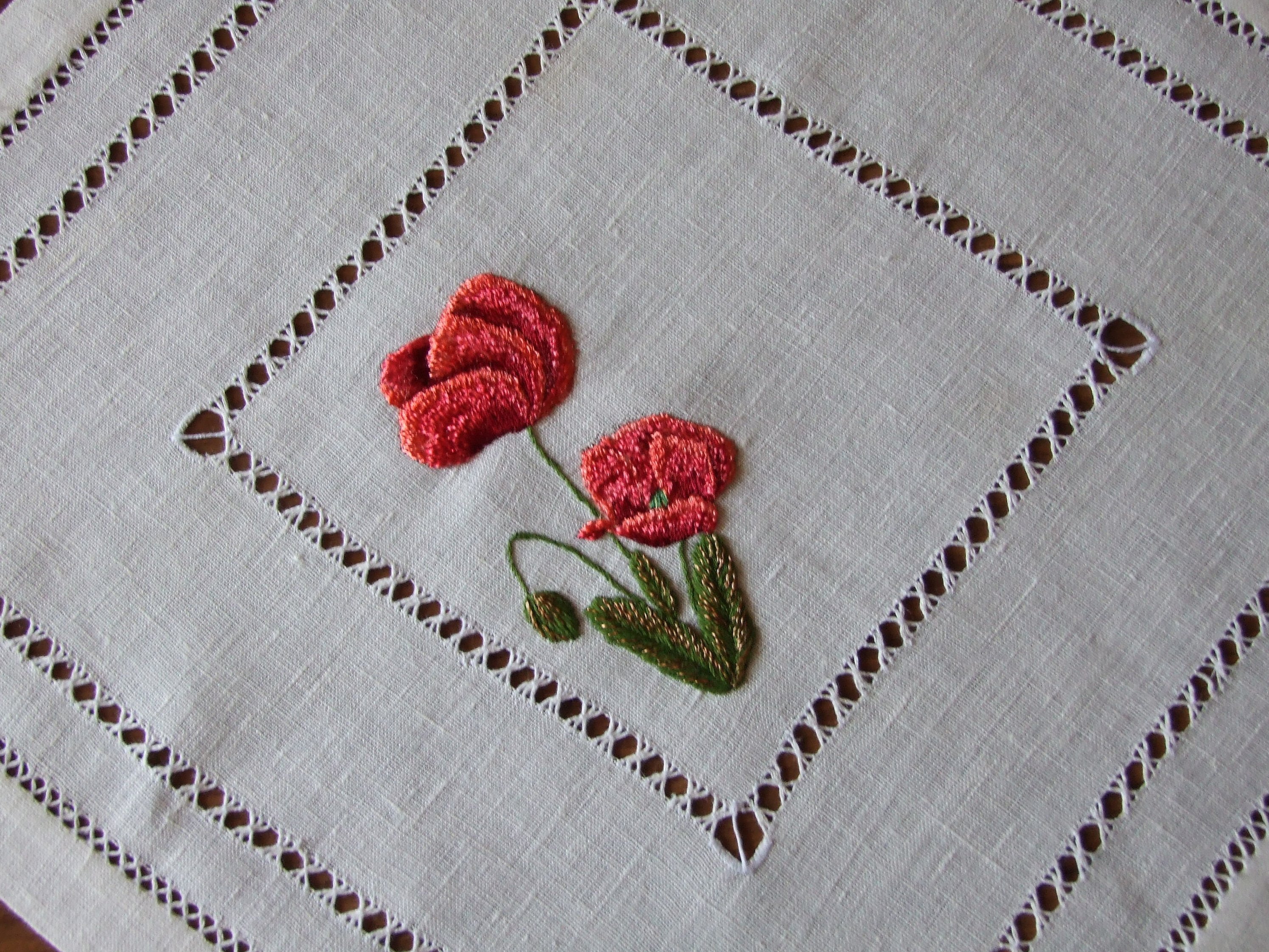
How to cross stitch a tablecloth: tips
Before embroidering on a tablecloth, you should learn how to work with napkins. They are not so big and you don’t feel sorry for them if your first attempts fail. The most preferable material for embroidering on a tablecloth is cotton threads. It is not advisable to use beads and buttons to decorate tablecloths and napkins. It is best to use, of course, patterns. Cross-stitch pictures are more difficult to apply than patterns.

How to embroider a linen tablecloth correctly
Linen is an ideal material for cross stitching. It is used to make napkins, tablecloths, bedspreads and even underwear. Linen is very similar to canvas and is an evenly woven fabric. This means that the number of longitudinal and warp threads is the same. This will help you easily count the spaces between patterns or crosses.
You can simplify your work in the following way:
- Pull tight;
- Use needles from 26 to 28;
- Do not embroider half crosses;
- Do not use a pencil for marking;
- Pay attention to the crosses and their evenness.
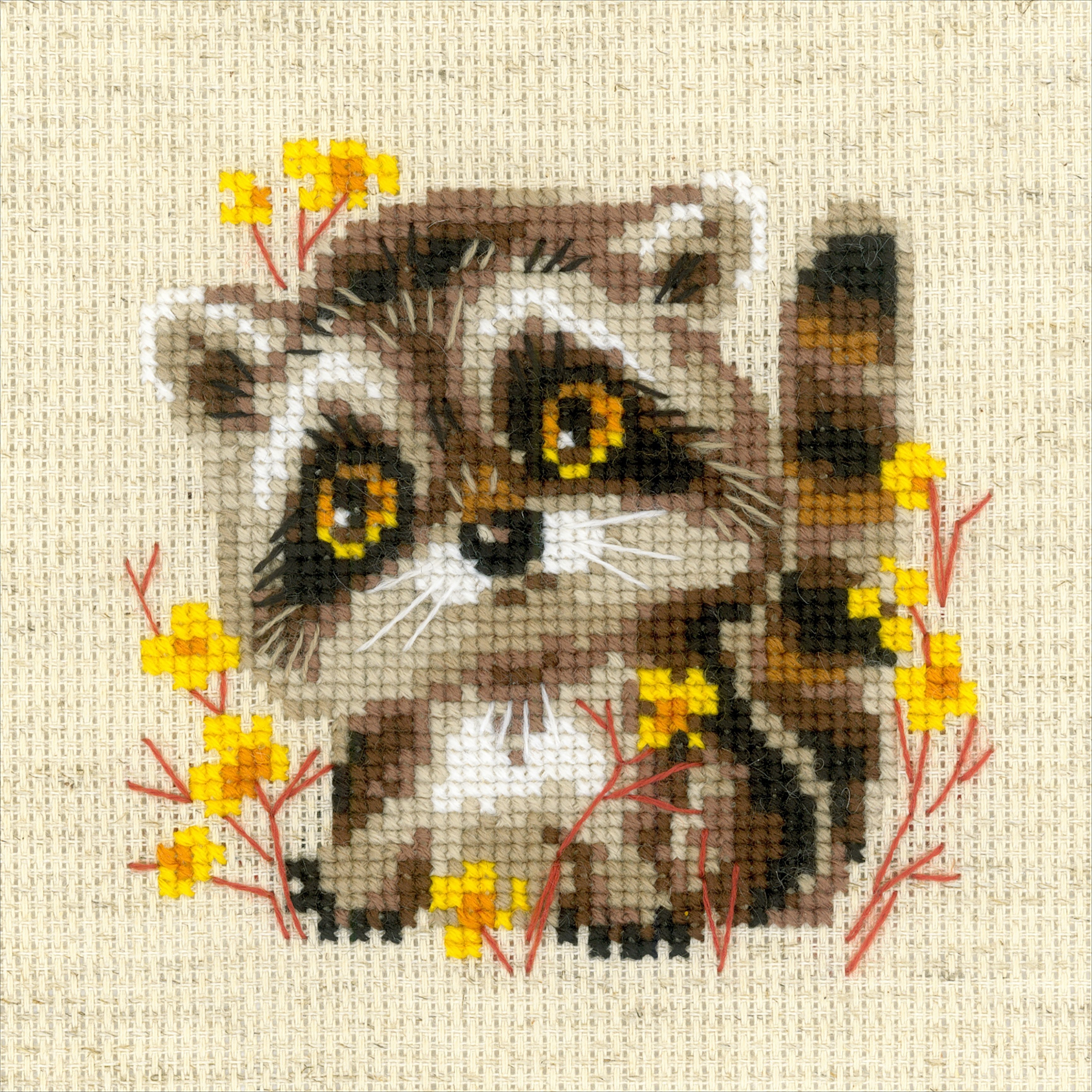
Final treatment and care
If you used a blank tablecloth instead of a ready-made one, you need to process the edges. To do this, fold them over and stitch them on a sewing machine. You can also do this by hand: go around the perimeter of the fabric with an overlock stitch. You can hide this seam with lace, which additionally decorates the product.
Important! The product is ready, but to ensure that it always pleases with its rich color and does not deteriorate, it must be properly cared for. It is recommended to wash such tablecloths separately and, naturally, by hand. They are soaped with soap without alkali and never rub the fabric or wring it out. Otherwise, the pattern may deteriorate.
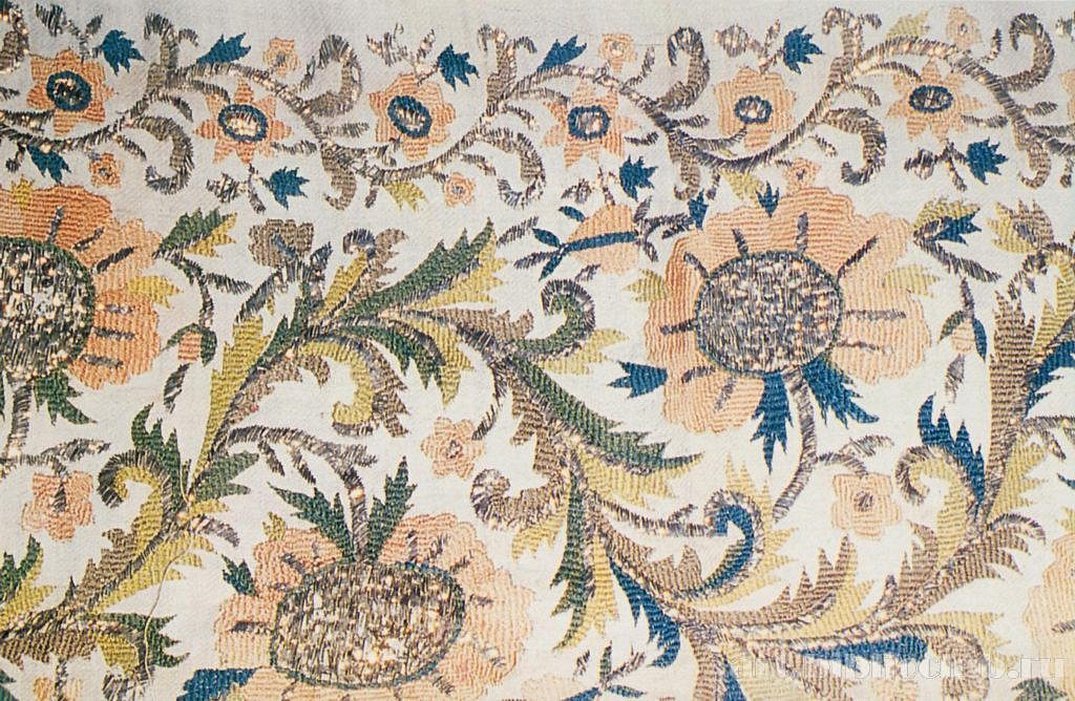
If the product is very dirty, it can be boiled, but only if it is embroidered with white threads. If there are colored elements, hot water is contraindicated. Dirt and stains can be removed with cotton wool and bleach. You need to be careful not to let it get on the drawing.
Machine embroidery tablecloth
Another option is when embroidery is done on a machine or a special machine. In this case, the future pattern or design is first developed on a computer program, and then specially configured embroidery programs work with machines that perform embroidery in a certain order.
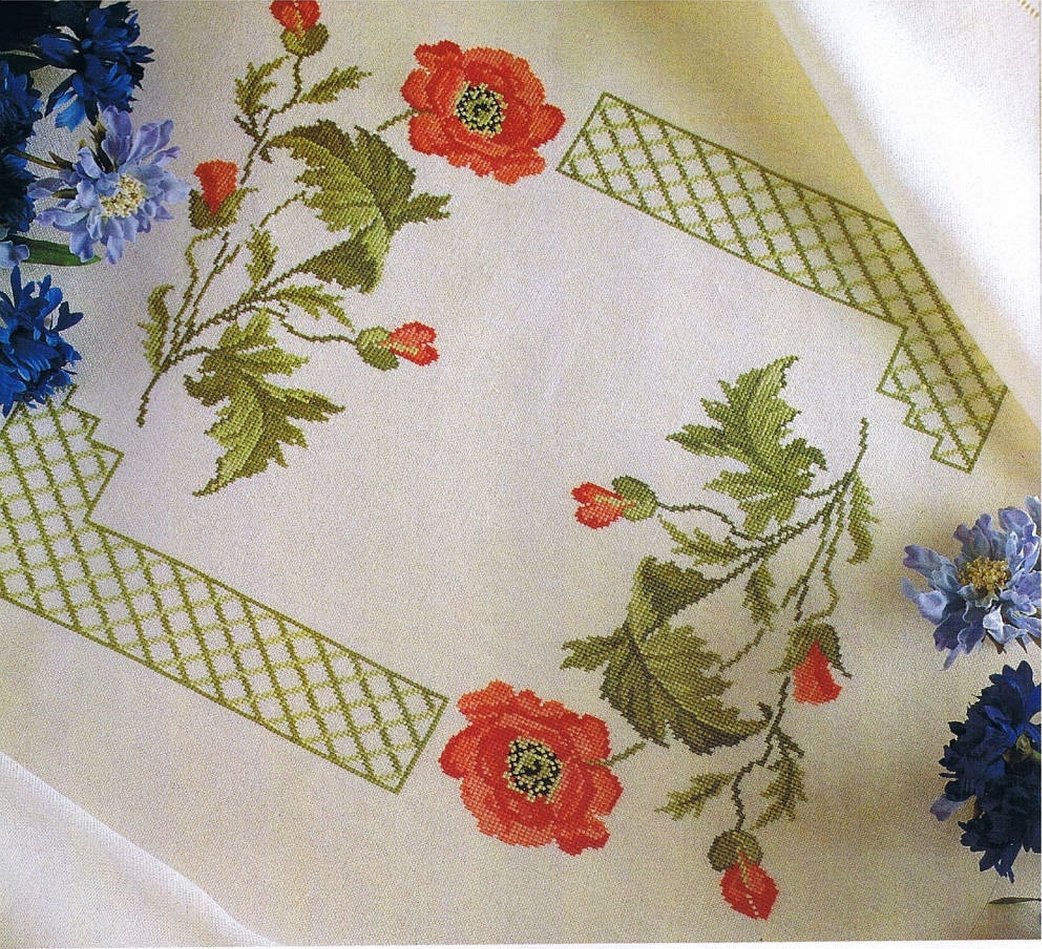
Thus, embroidery on tablecloths and napkin embroidery are quite ancient types of creativity that have not lost their popularity even now. Cross-stitched napkins and checkered tablecloths look original and give the house coziness and originality.




